Below are some of the common terms used in the gas sensor industry. this list is designed to help you understand the differences and specifications of the many types of gas sensors we offer.
Accuracy
The degree of correctness with which the measuring system yields the actual value of a measured gas, where the "actual value" refers to an accepted standard. Accuracy is typically described in terms deviation from the actual value in either a percentage or parts per million. For example, a 0-100% sensor may have an accuracy rating of +/- 0.1%, while a 2000ppm sensor might have an accuracy rating of +/- 30ppm.
Air Pressure
The pressure of the surrounding gas in contact with an object. Scientists often describe air pressure as the weight of the air molecules pushing against an object. This is why as you go higher in the air, the weight of the air molecules above you is reduced, hence, less air pressure.
Gas sensors are calibrated and designed to work most effectively at sea level which may be referred to as 1 atm, 101,325 Pa (1,013.25 hPa; 1,013.25 mbar), which is equivalent to 760 mm Hg, 29.9212 inches Hg, or 14.696 psi. However, different gas sensors are designed to work at different pressure ranges.
Ambient air
The air a sensor is exposed to. Depending on the sensor use, this may be indoor air, air inside an enclosed chamber, or "fresh air" outdoors. Ambient air sensors are used to test for indoor or outdoor air quality, or for the composition of air inside a closed container like a terrarium or bio-chamber.
Calibration
The process of adjusting a sensor's output by setting it against a known concentration of gas. Calibration may be single point (1 gas), span (2 gases) or some sensors use automatic background calibration.
Read more about gas sensor calibration here.
Calibration Gas
A known concentration of gas used to set the instrument span or alarm level. Companies like Calgas specialize in providing tanks of pure gas used to calibrate gas sensors. The sensor is exposed to the calibration gas, then the calibration is stored in the sensor's firmware.
Carbon Dioxide
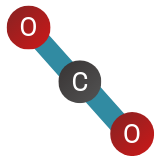
CO2 occurs naturally in Earth's atmosphere as a trace gas. The current concentration is about 0.04% (410 ppm) by volume. Natural sources include volcanoes, hot springs and geysers, and it is freed from carbonate rocks by dissolution in water and acids.
Because carbon dioxide is soluble in water, it occurs naturally in groundwater, rivers and lakes, ice caps, glaciers and seawater. It is present in deposits of petroleum and natural gas. Carbon dioxide is odorless at normally encountered concentrations. However, at high concentrations, it has a sharp and acidic odor.
Carbon dioxide is necessary for life. humans and animals breath in oxygen and exhale CO2. Plants take in CO2 and produce oxygen. This "Carbon Cycle" is part of the foundation on which all life is based on Earth.
Carbon Monoxide
CO is an odorless, colorless, and tasteless gas that is slightly less dense than air. It is toxic to humans and animals that use hemoglobin as an oxygen carrier when encountered in concentrations above about 35ppm. Carbon monoxide poisoning is the most common cause of death by poisoning worldwide. While CO is often confused with CO2, they are very different and require different sensors to detect them.
See this carbon monoxide safety levels chart for more information.
Combustion
Combustion requires fuel, oxygen gas and heat. In oxygen-enriched atmospheres, combustion is more likely to occur from a flame or a spark. Therefore, an oxygen sensor to test for high (over 21%) oxygen levels is recommended. Combustion with low levels of oxygen generates carbon monoxide, which requires a carbon monoxide sensor to measure.
Confined Space
A space with limited entry and egress and not suitable for human inhabitants. An example is the interior of a storage tank or manhole entered by maintenance workers. Hazards in confined spaces include harmful dust or gases, asphyxiation, submersion in liquids or free-flowing granular solids (grain bins), electrocution or entrapment. A confined space is defined very specifically by OSHA and they have many rules for worker safety in confined spaces.
Cross Sensitivity
Many gas sensors are cross-sensitive to other gases. This means that one of the gases in a sample can change (sometimes referred to as poison) the reading of the other gas sensor. For example, the AlphaSense CH-A3 Methane sensor will have a 50% sensitivity loss when exposed for long periods of time to hydrogen sulfide gas. Where specific cross sensitivity to another gas is known it will be listed on the sensor's data sheet or manual.
Cryogenic Gases
Cryogenics is defined as the behavior or materials at very low temperatures. It is not well-defined at what point on the temperature scale refrigeration ends and cryogenics begins, but scientists assume a gas to be cryogenic if it can be liquefied at or below −150 °C (123 K; −238 °F). The U.S. National Institute of Standards and Technology has chosen to consider the field of cryogenics as that involving temperatures below −180 °C (93 K; −292 °F).
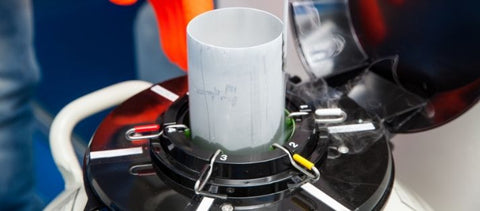
Dissolved Gas
Dissolved gas is defined as free molecules of a gas in a liquid that are not bound to anything else. While virtually any gas can be dissolved in any liquid, in most cases dissolved as is referring to dissolved oxygen (DO) in water, a requirement for all life.
Dissolved gases can be added to or removed from a liquid by changing the temperature and pressure, or in the case of DO, the salinity of the water. The measurement of DO is important in both medicine and environmental science.
Electro Chemical Sensors
Electro chemical sensors rely on an electrolyte which produces a micro current when exposed to a particular gas. This analog voltage is proportional to the amount of gas. EC sensors are well documented and in general have a very low price. However, the electrolyte begins to degrade from the moment the sensor is manufactured, so it's lifetime is typically rated in months. However, this can be extended by proper storage before use.
Learn more about electrochemical sensors here.
Flow
Flow is measured as volume over time. Milliliters per minute, liter per second, gallons per hour: all are rates of flow.
In a closed loop system, flow relates to the volume of air moving across a gas sensor over a period of time. The higher the flow, the faster the sensor will respond to a change in reading. Flow can be increased by raising the gas pressure before the sensor or increasing the vacuum level after the sensor. Either way, the resulting air pressure must be within the sensor's specifications to guarantee accuracy. For this reason, gas sensor include a barometric pressure range rating.
Formaldehyde
Formaldehyde is mainly used in the production of industrial resins for particle board and coatings. In view of its widespread use, toxicity, and volatility, formaldehyde poses a significant danger to human health. In 2011, the US National Toxicology Program described formaldehyde as "known to be a human carcinogen."
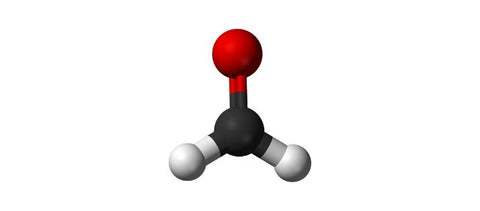
The use of formaldehyde in building materials has resulted in the need for sensors in personal safety devices warn by builders and their employees.
Gas
A phase of matter which expands indefinitely to fill a containment vessel. Characterized by a low density, it is one of three phases: solid, liquid and gas. All materials can be at any one of these three phases, although they may not appear in nature. For example, carbon dioxide is naturally as gas, but it can be frozen into dry ice or compressed into liquid CO2.
Gases like nitrogen will expand to around 700 times their volume when their phase changes from a liquid to a gas.
HVAC or HVACR
HVAC is an acronym for Heating, Ventilation, and Air Conditioning. Also known as HVACR (includes refrigeration) all HVAC systems use compressed gases lke ammonia, carbon dioxide or fluorinated hydrocarbons in a closed system to cool buildings or vehicles.
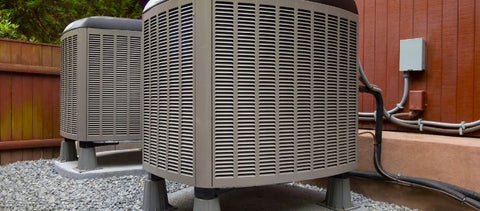
Hydrogen Sulfide
H2S is a colorless gas with the characteristic odor of rotten eggs. It is very poisonous, corrosive, and flammable. According to OSHA, H2S gas levels at or above 100ppm is immediately dangerous to life and health (IDLH). Entry into IDLH atmospheres can only be made using specialized breathing equipment.
Hydrogen sulfide is one of the organic decomposition gases including methane, ammonia, and carbon dioxide. All have safety measures and use specific gas sensors for measurement and testing.
Incubator (cell culture)
Cell Incubators are used to grow and maintain microbiological or cell cultures. The incubator maintains optimal temperature, humidity, pH and gas levels such as carbon dioxide (CO2) and oxygen to best promote the growth of the cells inside.
Incubators are essential for experimental work in cell biology microbiology and molecular biology and are used to culture both bacterial as well as eukaryotic cells.
A common use is the CO2 incubator, so called because it is designed to maintain a temperature of 38C, 95% relative humidity and 5% enriched CO2 in the air. The carbon dioxide is used to maintain the pH balance of the water inside the cells.
Learn more about CO2 incubators here.
LEL (or LFL) - Lower Explosion Limit
Used in safety, the lower explosion limit or lower flammability limit is the lowest percentage of a gas mixed with oxygen that will make the gas/air mixture flammable or explosive. This is in contrast to the UEL/UFL, which is the highest percentage of gas that can be combined with oxygen and still flammable. Note that in order for a gas to be flammable, mixture with oxygen is required.
LEL and UEL vary with temperature and pressure, but are normally expressed in terms of volume percentage at 25°C and normal atmospheric pressure. The flammable/explosive range of different gases are listed here.
Methane
Methane (CH4) is the main constituent of natural gas. It is commonly used as a fuel, although capturing and storing it poses a challenge due to its gaseous state under standard temperature and pressure. Because methane is lighter than air, it tends to rise and accumulate near the higher stagnant parts of enclosed buildings and tightly closed manure storage pits.
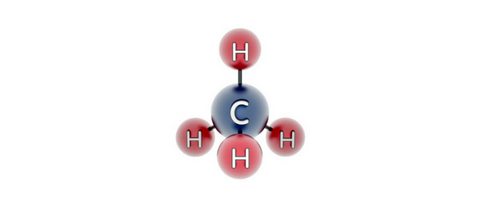
Micro Sensors
Microsensors are machined devices that have a smaller size and lower power requirements than commonly used sensors. They are part of the class of microelectromechanical system (MEMS) devices.
The next generation of micro sensors being produced rely on molecular nanomaterials to measure gas levels. With their low power requirements, these sensors could easily be added to clothing or hundreds of other products.
Modified Atmospheric Packaging
MAP is the replacement of the gases inside a sealed package. It is used to preserve the quality of fresh produce, meats, and pharmaceuticals. Since many products spoil or change color when left in open air, removing gases like oxygen from the packaging can improve shelf life, increase product attractiveness and reduces waste.

Scientists have spent years refining the best combination of gases to seal inside packages. For example, a bag of potato chips might be sealed in pure nitrogen, while meat may be sealed in a mixture of nitrogen, CO2 and carbon monoxide.
Operating Temperature Range
The range of temperatures over which a sensor can be used within the specified maximum error.
Opto-chemical Oxygen Sensor
The measuring principle of an optochemical oxygen sensor is based on the effect of luminescence quenching by oxygen. Certain dyes will fluoresce when exposed to oxygen. The amount and duration of florescence is proportional to the amount of oxygen in the gas sample.
Learn more about optical oxygen sensors here.
Oxygen
Oxygen is the third-most abundant element in the universe, after hydrogen and helium, and is the basis for all human and animal life. At standard temperature and pressure, two atoms of the element bind to form dioxygen, a colorless and odorless gas. Diatomic oxygen gas constitutes 20.8% of the Earth's atmosphere.

Parts Per Million (ppm)
Parts per million is the ratio of one gas to another. For example, 100 ppm of oxygen is equivalent of 100 oxygen molecules in a gas made up of a million gas molecules. Another way to think about it is that 1 ppm is roughly equivalent to 5 liters of liquid in an Olympic size swimming pool.
Typically sensors are defined by the range of gases they measure. 0-100% gas sensors use a percent measuring scale, while sensors that measure less than 1% gas use the parts per million scale.
Partial Pressure
Partial pressure describes the pressure of a single gas in a mix of gases. The total pressure of a gas is the sum of all the partial pressures of gas in the mix. It is usually expressed in millibars. For example, fresh air is 78% nitrogen, 20.9% oxygen, 1% argon, 0.4% CO2, other trace gases and water vapor. When described in partial pressure terms, air is 780 mb nitrogen, 209 mb oxygen, 10mb argon and 0.4mb CO2. In either case, the gas pressures added together are either 99.9% or 9,990 mb, which is approximately 1 bar or 1 atm at standard temperature and pressure.
pO2 or ppO2 is used most often in medical applications. Pulmonary or lung capability is often measured as differential partial pressure for respiratory tidal action from inhale to exhale, also known as end tidal capnography or ETCO2.
Range
The difference between the minimum and maximum values of a gas a sensor can detect within the manufacturer's stated speed and accuracy specifications. Typically gas sensors range is measured in parts per million when less than 10,000 ppm (1%) gas is measured, or in percentage of gas when 1-100% is measured.
Response Time
The time delay required for a sensor to respond to a change in a gas level. No sensor can respond immediately to a change, however the response time can be as short as a few milliseconds up to several minutes. For example a typical gas sensor might list its response time as "t90: < 15 sec." This means that it will go from measuring no gas to 90% of the target value in a sample in less than 15 seconds.
Sample Draw
Sample draw relates to tube port sensors that use a sealed housing which allows for a clean gas sample stream into the sensor. This allows better sample gas management as the sample is unaffected by ambient air. Some sensors are manufactured with tube ports (air sample in and out) built-in, while for common 20mm gas sensors a tube cap adapter can be added.
Sensitivity
The amount of a change in gas level required to change a sensor's output response. Sensitivity provides an indication of a sensor's ability to detect small changes in gas levels. Typically, sensors that measure on a 0-100% scale are less sensitive than sensors that measure in parts per million.
Sensor
Is a device or module whose purpose is to detect changes in its environment and send the information to other electronics, frequently a computer processor. A sensor is always used with other electronics. Gas detecting sensors convert the presence of a gas or vapor into an analog signal proportionate to the amount of target gas being measured. A gas sensor is the heart of every gas monitor.
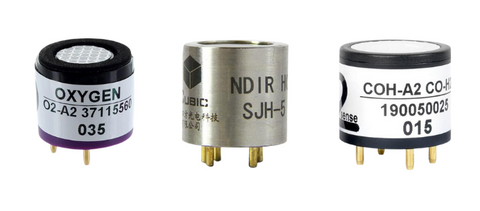
Smart Sensor
A sensor in which the electronics that process the output from the sensor is converted from analog to a common digital output like serial, RS-232 or RS485. Smart sensors may work in combination with other sensors on the board, for example, an oxygen and pressure sensor combined that outputs the oxygen level at any altitude or barometric pressure. Smart sensors may also include power management functions or built-in memory.
Temperature
A number expressing the hot and cold of an object compared to another. Temperature by itself is arbitrary. We measure it because a thermometer has been calibrated by scientific consensus to the Celsius scale (formerly called centigrade), the Fahrenheit scale, or Kelvin scale. For example, water boils at 212°F, 100°C or 373.15Kelvin.
Toxic Gas
Any substance which causes illness or death when inhaled or absorbed by the body in relatively small quantities.
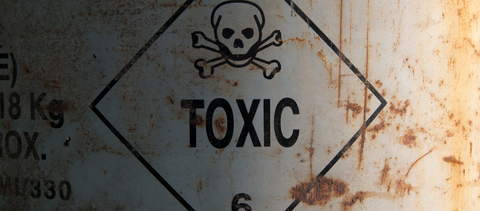
Vapor
The gaseous state of material below its boiling point.
Zirconia Sensor
A type of oxygen sensor that measures the partial pressure of oxygen in a gas or mixture of gases. Learn more about how zirconia sensors work here.

